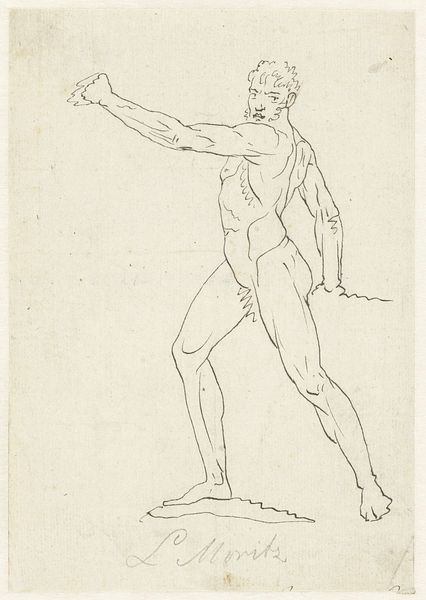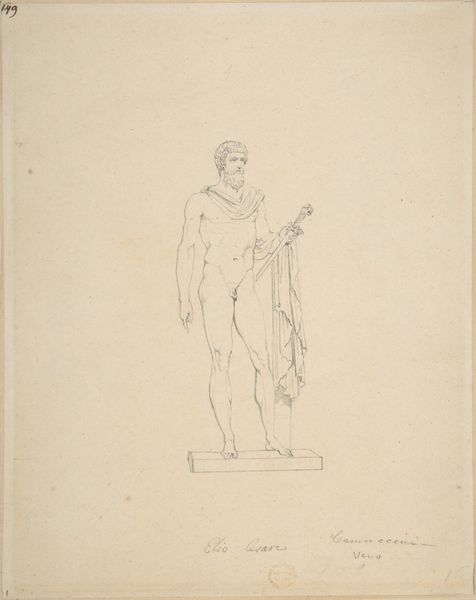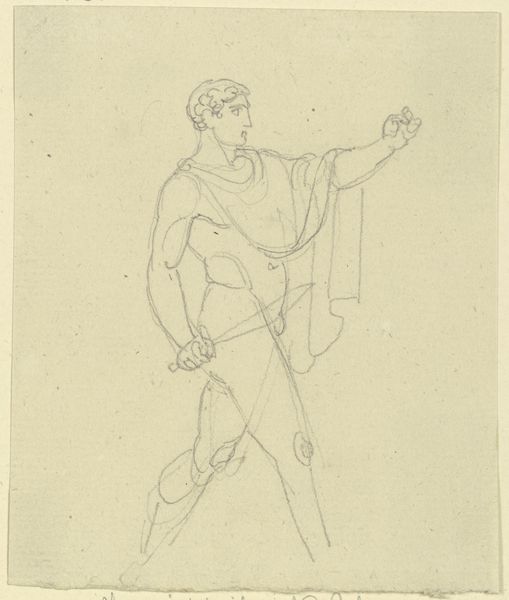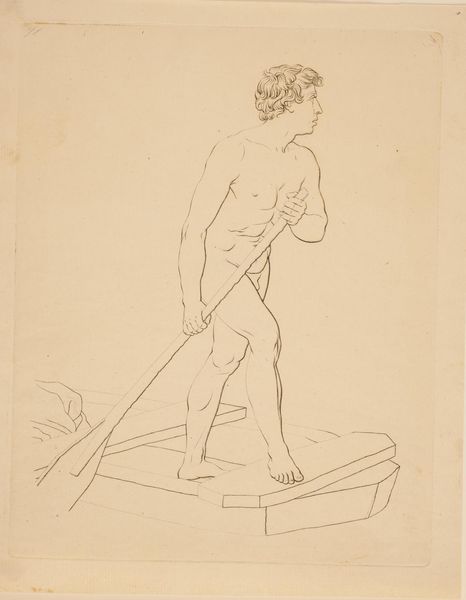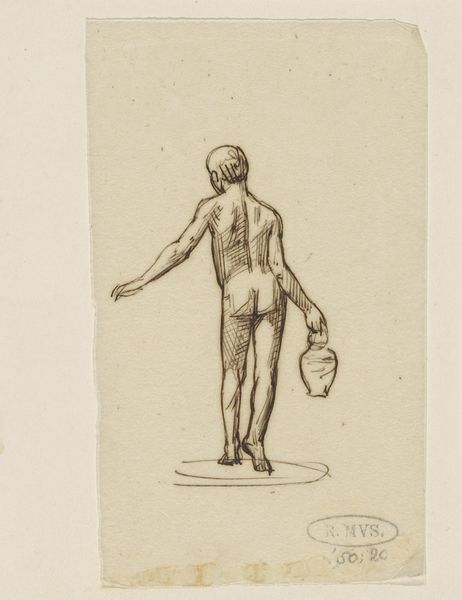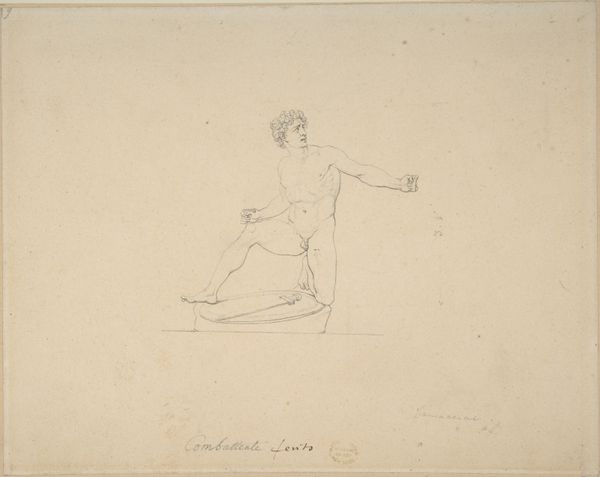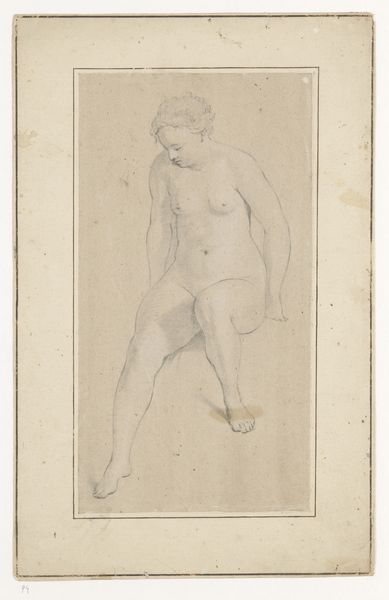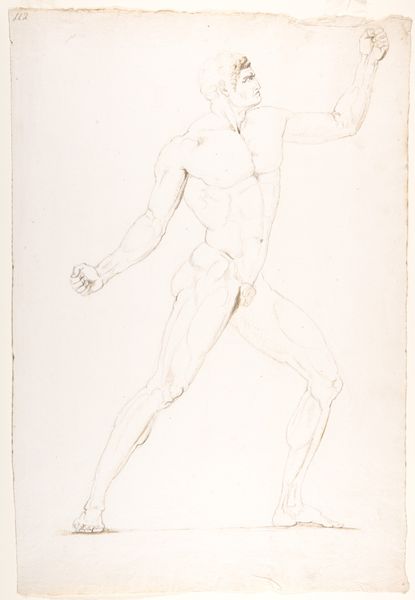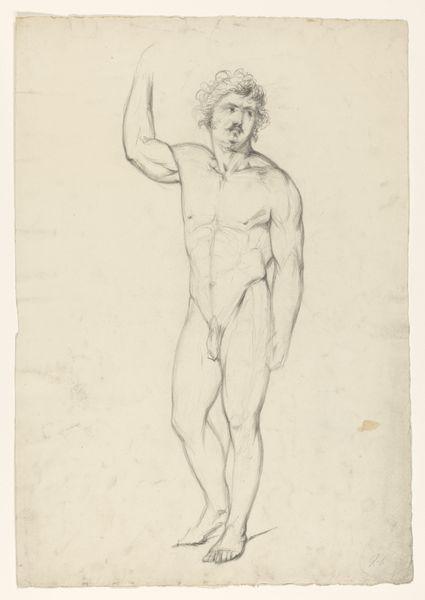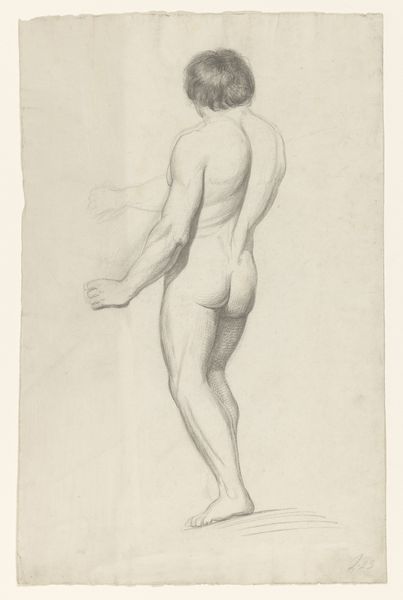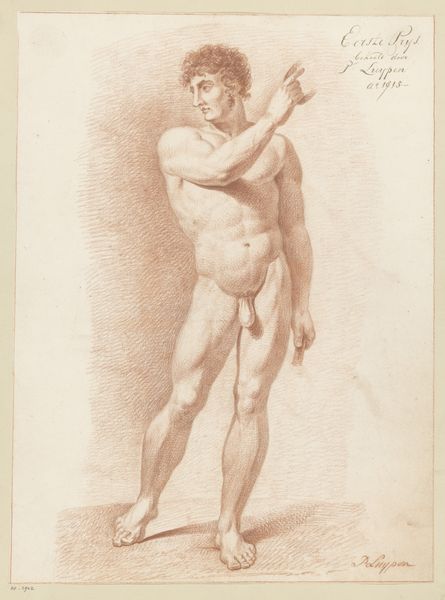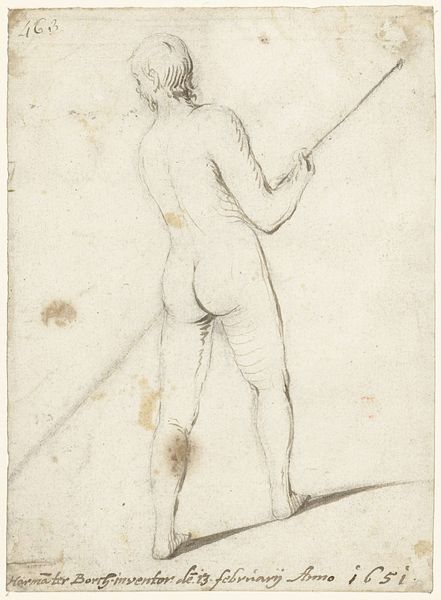
drawing, pencil
#
drawing
#
allegory
#
old engraving style
#
figuration
#
pencil
#
nude
Dimensions: height 172 mm, width 115 mm
Copyright: Rijks Museum: Open Domain
Curator: Before us we have "Cupido", a drawing by Etienne Acille Réveil, created somewhere between 1829 and 1835 using pencil. Editor: It has a rather ghostly affect, like a faded memory brought to life. The thin pencil lines and pale paper contribute to the ethereal feel. Curator: Indeed, the lightness certainly enhances the feeling of allegory. Cupid, of course, represents desire and affection, and Reveil's choice of such delicate lines almost underscores the fragility of those feelings. Editor: But there's also a political dimension to the classical nude. The re-emergence of such forms often signals a return to perceived cultural glories, something the French certainly obsessed about after their Revolution and during the subsequent Empire. Curator: I agree. It harkens back to a sense of idealized beauty and order that society perhaps craved after upheaval, an idealized form of the body representing social health. But Cupid isn't merely an abstract symbol; his youthful appearance resonates, too. Editor: How so? I am sensing, with the boy, the rise of romanticizing the youthful vigor that could be easily corrupted with social and moral "disease." Curator: Well, love is often associated with new beginnings and innocence. So he isn’t merely representing desire, but, possibly, an uncorrupted version of desire before social convention perverts love, that may be seen as pure, perhaps unattainable. Editor: Interesting point! Placing it within that early 19th-century context reveals a fascinating dance between Neoclassical ideals and emerging Romantic sensitivities. The way we publicly represent "love" or "beauty" reflects so much of what a culture prizes and fears, I find it to be a crucial measure in the long historical records of society. Curator: Ultimately, the symbols, the medium, and the period of its creation create a potent combination, triggering ideas around power, change, and everlasting ideals in our present day. Editor: Right, these representations allow us to observe both cultural shifts as they solidify as much as revealing lasting societal trends that continuously adapt and thrive across epochs.
Comments
No comments
Be the first to comment and join the conversation on the ultimate creative platform.
